
It costs between $4 to $50 to fully charge an electric car, depending on the size of the battery and which charger type you use.
It’s generally understood that electric vehicles (EVs) are cheaper to run than gasoline cars. But just how true is this? It all depends on the type of EV you own, the charging point you use, and where you charge it.
Because of these factors, it can be difficult to find a straightforward answer when asking how much it costs to charge an electric car.
To make it easier, we’ll explore all of these elements in detail, so you’ll be able to figure out how much you might spend or even how much you might save.
Key Takeaways - EVs are 3-5 times cheaper to run per mile than gasoline cars. - The most common level 2 chargers can take 4-10 hours for a full charge at $1-5 an hour but are often free to use (cost per charge varies from $4 to $50). - Ultra-rapid charging options can charge an electric car to 80% in just 10-15 minutes for around $20. - Find out how much charging your EV at home could cost you using the following formula: Your electricity tariff (in kWh) x car battery size (in kWh) / 100.
Different Types of EV Chargers and Their Cost
To calculate the cost of charging your EV, you need to know what kind of charger you’ll be using. There are four main types of commercial EV chargers:
- Ultra-rapid
- Rapid
- Fast
- DC fast
Each of these has different charging times, costs, and availability. We’ll start with a quick summary table.
| Type of Charger | Cost | Time it takes to charge |
| Ultra-rapid | Around $20 for a full charge | Can deliver 80% charge in just 10-15 minutes |
| Rapid | Similar price to ultra-rapid | Can deliver 80% charge in 30-60 minutes |
| Fast (can also be used as a home charger) | $1-5 per hour, sometimes free | Can deliver 80% charge in 4-10 hours |
| DC Fast | $10-30 for a full charge | Can deliver 80% in under 20 minutes |
Related Reading: Where will the electricity come from for electric cars?
Ultra-Rapid
Ultra-rapid chargers are mostly found on highways or close to big cities. However, they are still fairly uncommon to come across.
This is the fastest way to charge your EV. Most EVs can be charged up to 80% in just 10-15 minutes. This is because they provide power at 100 kiloWatts (kW) or more. To put this into perspective, most other chargers provide power at around 7-20 kW.
For this reason, they are obviously a popular choice. Being able to recharge your EV in such little time can make long journeys a breeze.
But it comes at a cost. Electrify America, one of the largest EV charging networks, predicts users will pay around $0.43 / kWh (kiloWatt hours) for ultra-rapid charging.
The average battery capacity of an EV is 40 kWh. This means using Electrify America ultra-rapid chargers in California would cost around $17.20 for a full charge, which is still lower than a full tank of gas.
Check out how much it would cost for your state here.
Unfortunately, these are not the most common types of chargers to find, despite them being the fastest. However, more and more are being installed as EV development progresses. Take a look at the map below showing Electrify America’s ultra-rapid charging points.

Image Source: electrifyamerica.com
Rapid
Rapid chargers usually charge at about 43-50 kW, meaning it can take around 30 minutes to an hour for an 80% charge. These are more common than ultra-rapid, but they’re not the standard at most public charging stations.
You can expect similar costs to ultra-rapid charging. Also, where ultra-rapid is an option, you’re likely to see rapid charging as well, meaning the map above is a good estimation of the number of how many you’ll find in the U.S.
Fast
Fast chargers are the most common, also known as level 2 chargers. Almost every type of EV can use this type, meaning they are practical to build and universal.
- They often charge at 7 kW, meaning you’re looking at waiting around 4-10 hours for a full charge.
- The cost will alter depending on where you charge, but you can expect it to range between $1-5 per hour ($4-$50 total, depending on the charge per kW and your battery size).
- There are many places that don’t charge you for using level 2 stations.
DC Fast Charger
As advances in EV technology grow, chargers are becoming faster and cheaper. One successful outcome of this is the DC fast charger.
Electric cars only accept DC power. This refers to a direct current that travels in one direction.
However, the power from the grid is AC, which means it is an alternating current, reversing and changing direction 60 times a second. For this reason, the current must be converted to DC in order to power EVs. With DC fast charging, the current has already been converted, meaning it can deliver more power faster.
This means it is capable of charging most EVs to 80% in under 20 minutes. At the moment, in North America, there are three types of DC fast chargers:
- CHAdeMO
- Combined Charging System (CCS)
- Tesla Supercharger
Nearly all modern EVs are able to use CHAdeMO and CCS. However, only Tesla owners can use Tesla Superchargers.
More and more of these are popping up around America. As always, convenience comes at a price, but it’s not extortionate. The national average can vary from $10-30 for a full charge, but it does depend on the state you are charging in.
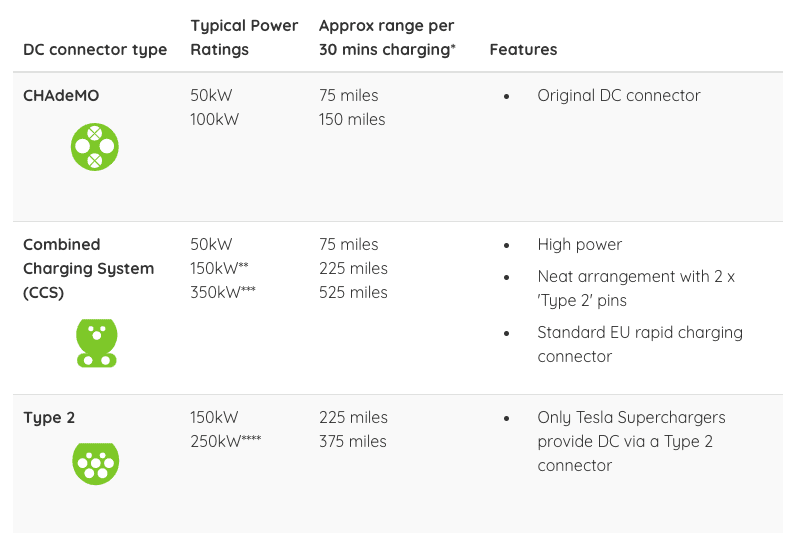
Image Source: pod-point.com
Cost of Installing Charging Points at Home
If you own an EV, the most useful form of charging is overnight at your house. This keeps costs down and will mean your vehicle is always ready for your adventures. Like public networks, there are different types of chargers you can install.

Image Source: eonenergy.com
Level 1
These are the most basic chargers, plugging into your standard socket with a three-prong plug. As you can imagine, this doesn’t take a big initial investment. However, they are the slowest option. You can expect to get 4-6 miles of battery range for every hour of charging. This can mean upwards of 35 hours just to get one full charge.
For this reason, these kinds of chargers are best for plug-in hybrids, where a single overnight charge should be sufficient. It’s difficult to say how much this would cost, as different houses have different energy tariffs, and different EVs have different battery capacities. So, a good rule of thumb is to use the following formula:
Your electricity tariff (in kWh) x car battery size (in kWh) / 100
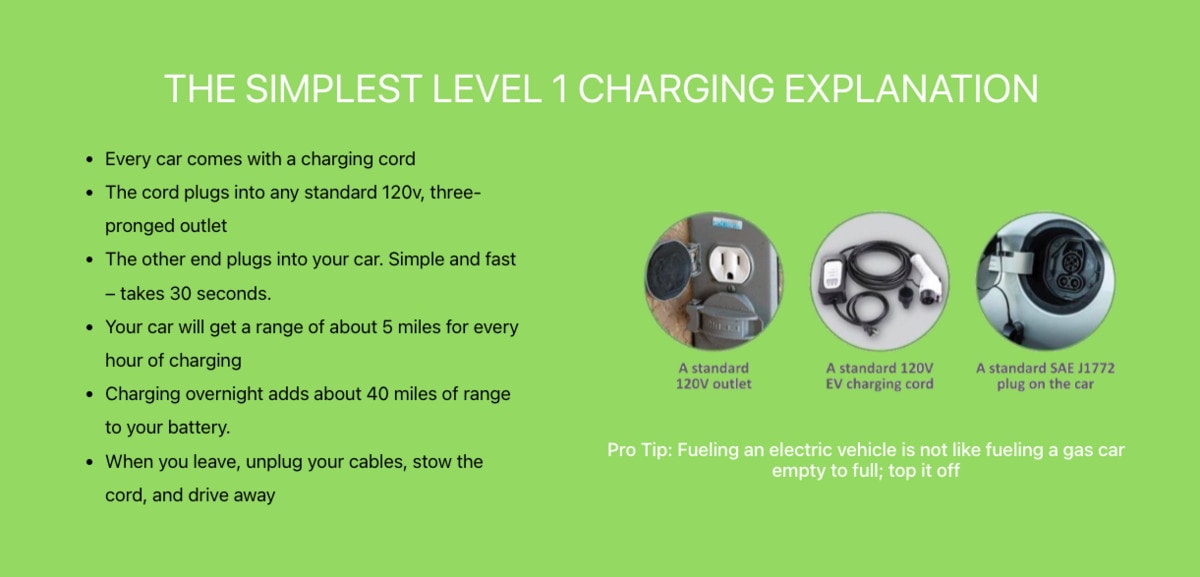
Image Source: lowpowerevcharging.com
Level 2
A standard wall outlet offers 120 volts, but a level 2 charger uses 240 volts. This means your charging times will be a lot quicker. However, you’ll also have to consider the installation costs.
At the moment, the average cost to install this kind of charger ranges between $700 and $2000. This may sound like a lot, but it’s worth the investment for a charge that’s 15 times faster than a level 1.
With the average vehicle taking 4-10 hours to fully charge using a level 2, plugging in your EV overnight will be more than enough.
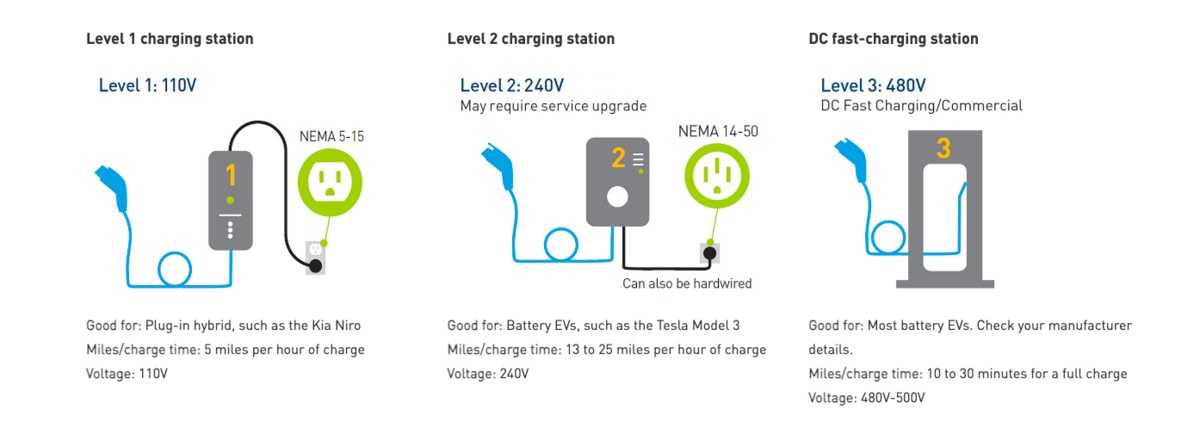
Image Source: pge.com
Related Reading: How Much Energy Does the Average House Use?
Types of EVs to Consider
Depending on your budget, lifestyle, and needs, certain EVs will suit you better. Whether you’re looking for long-range, cheap alternatives, or something suitable for quick drives through the city, there’ll be an option that works.
Battery Electric Vehicle (BEV)

Image Source: evgo.com
A battery electric vehicle refers to your standard EV. The average battery capacity for this kind of EV is usually around 40 kWh. However, newer models being produced can have up to 100 kWh. The bigger the capacity, the more electricity needed to power it. This means that costs can change drastically depending on the model.
You can use almost all types of chargers for these vehicles, meaning the cost of running one depends on the charger you use. Using a level 1 charger overnight will do the trick if you want to keep costs low.
Hybrid Electric Vehicles (HEV)
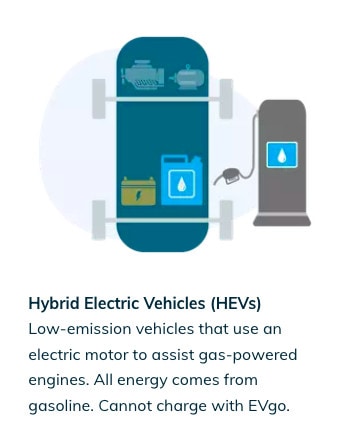
Image Source: evgo.com
Hybrid electric vehicles only use gasoline for refueling, which means they will be more expensive to run than a standard EV. They have both a gas-powered engine and an electric motor.
Rather than charging the motor by plugging it into the grid, energy for the battery is gained through regenerative braking. This means the energy lost in braking is saved and assists the gasoline engine in accelerating.
Ultimately, this kind of vehicle improves fuel economy. Because you’ll be spending less on gas, and it’ll be better for the environment.
Plug-in Hybrid Electric Vehicles (PHEV)
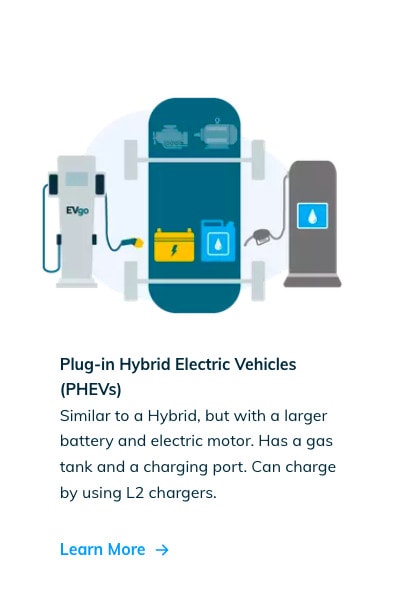
Image Source: evgo.com
Similarly to hybrids, plug-in hybrids have both an internal combustion engine (ICE) and an electric motor. However, the electric battery can be charged by plugging it into the grid. This means shorter journeys can be powered just by electricity, saving money on gas and producing less harmful polluting gases.
This is a great option if you want the benefits of an electric car without worrying about the practicalities of charging. The majority of PHEVs sit at around $40,000. But it’s important to consider tax credits that aim to bring the cost down.
Fuel Cell Electric Vehicles (FCEV)
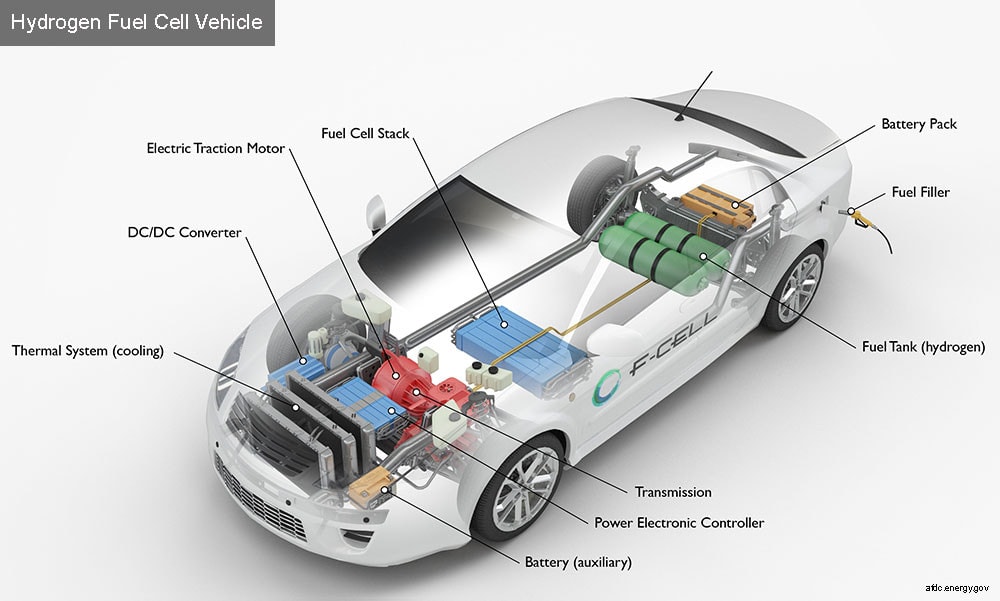
Image Source: afdc.energy.gov
FCEVs use hydrogen power to refuel instead of electricity. They still have electric motors, but the electricity is generated using a fuel cell powered by hydrogen.
Now, the cost is a completely different thing altogether. A kilogram of hydrogen costs around $16, and most FCEVs can carry around 5-6kg. This means a full tank can cost anywhere between $50 and $80.
This is obviously a significant amount, similar to the cost of gas. However, certain car companies are offering incentives that help with these costs. For example, Toyota provides all their Mirai customers with $15,000 on a prepaid card. This equates to about three years of free refueling, which, as you can imagine, is a huge benefit.
Comparing EV Charging Cost and Gasoline Refueling Cost
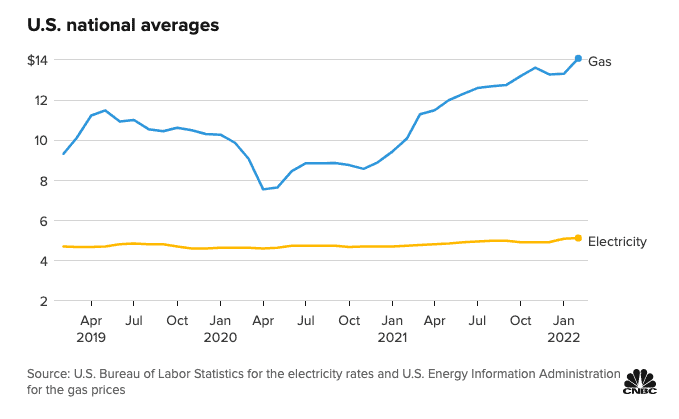
Image Source: cnbc.com
Despite all of the factors at play when calculating the cost of charging an electric vehicle, it’s clear EVs are cheaper to run than gasoline. Not only are they cheaper to run, but studies have found they are less expensive to maintain and own in general.
- As of 2022, EVs are 3-5 times cheaper per mile to drive than gasoline cars. This is a substantial saving and a huge benefit alongside reducing your carbon footprint.
- Findings from the same report observe that owning an EV will save people $6,000 to $10,000 over the car’s lifespan.
- A study that compared the top 9 electric cars with their gasoline equivalents found that owners would save many thousands of dollars during their lifetime ownership.
So, be sure to consider investing in an electric vehicle if you want to save money, reduce harmful emissions, and drive in style.
Read Next:




